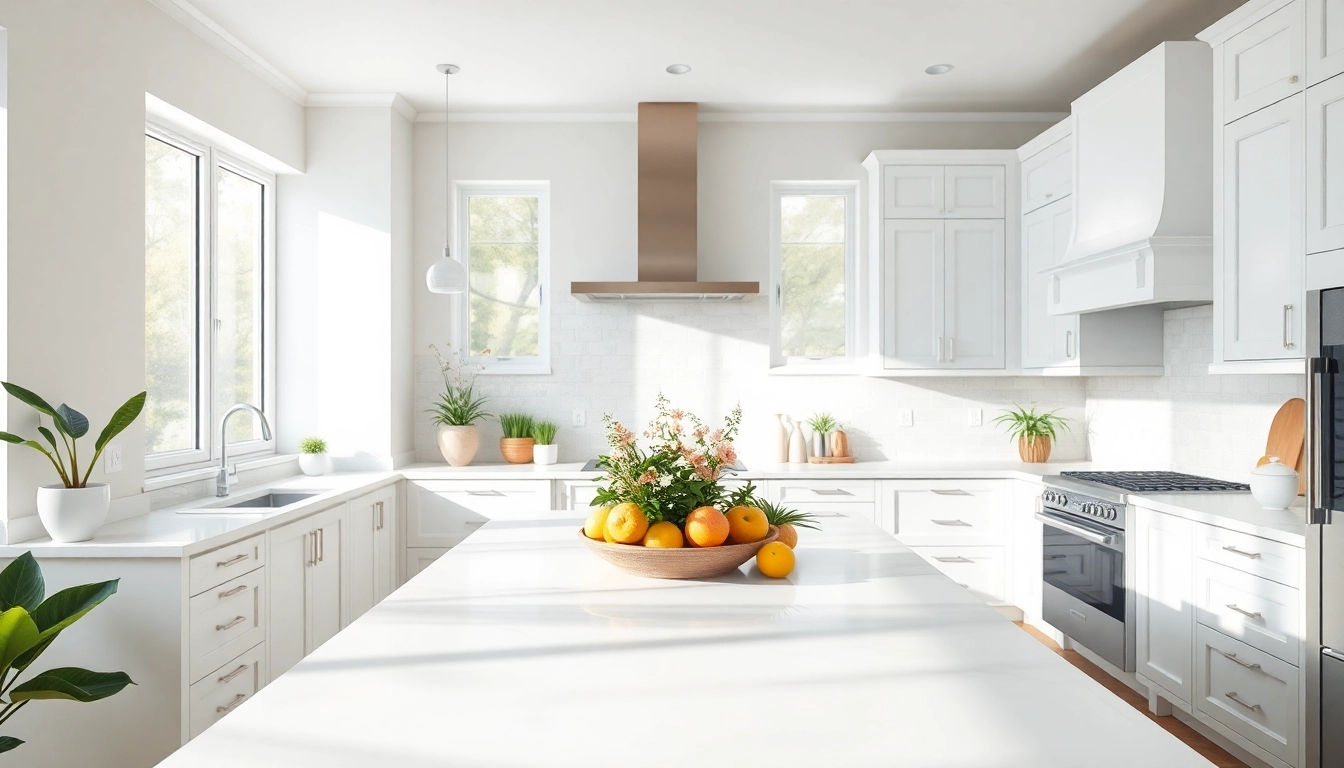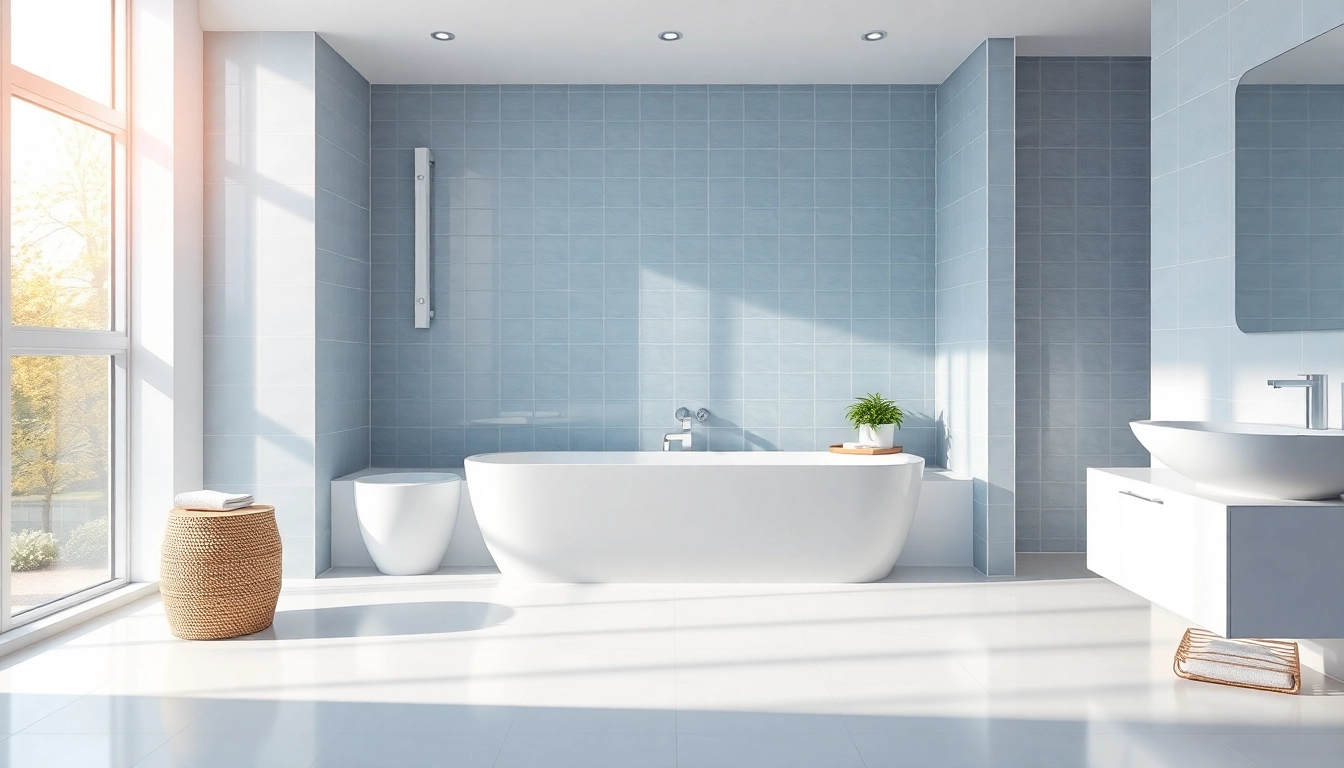Essential Tips and Techniques for Successful Drywall Painting
Understanding Drywall Painting Basics
What is Drywall Painting?
Drywall painting refers to the process of applying paint on drywall surfaces. Drywall, often used in construction, is made from a core of gypsum plaster sandwiched between two sheets of thick paper. While drywall itself provides a smooth canvas, painting it adds both aesthetic appeal and protective qualities. Since drywall is porous, painting it properly is crucial for achieving a high-quality finish that can withstand the test of time.
Benefits of Proper Drywall Painting
Proper drywall painting does more than just enhance the appearance of a space; it provides several benefits:
- Protection: A well-painted drywall surface helps protect the material underneath from moisture and damage.
- Aesthetic Appeal: Painting allows homeowners to express their style and preferences through color choices and finishes.
- Value Addition: Freshly painted walls increase the appeal of your property, helping it stand out in the real estate market.
- Maintenance: Well-painted surfaces are easier to clean and maintain, allowing for quick touch-ups rather than full repaints.
Tools and Materials Needed for Drywall Painting
To successfully paint drywall, having the right tools and materials is essential:
- Paintbrushes and rollers
- Drywall primer
- A high-quality paint (preferably latex-based)
- Sandpaper or sanding sponge
- Drop cloths or plastic sheeting to protect floors and furniture
- Painter’s tape for clean edges
- Putty knife for filling holes and seams
- Bucket for mixing paint
- Extension pole for reaching high areas
Preparing Your Drywall for Painting
Cleaning and Sanding the Surface
Before starting the painting process, you need to prepare the drywall properly. This involves cleaning and sanding the surface:
Start by dusting the walls with a dry cloth or using a vacuum to avoid any particles interfering with the paint. Following this, sand the surface lightly to create a smooth finish. Focus on areas that have been patched or repaired. This step ensures that the paint adheres properly and provides an even finish.
Applying Primer for Optimal Results
Applying a primer is crucial for achieving a clean and consistent finish on drywall. Primer acts as a barrier, preventing the paint from soaking into the porous surface of the drywall.
Choose a primer suitable for drywall, ideally a high-quality latex-based option. Use a roller to apply it evenly across the surface, and don’t forget to cover corners and edges with a brush. Allow the primer to dry completely before proceeding to paint. A well-primed surface reduces the number of paint coats needed, saves time, and enhances the overall finish.
Common Mistakes to Avoid during Preparation
Preparation is vital, yet it can be prone to errors. Here are some common mistakes to avoid:
- Skipping the Primer: Neglecting to apply primer can lead to poor adhesion and uneven color.
- Inadequate Cleaning: Failing to clean the surface can result in dust embedding itself in the paint.
- Rushing the Drying Time: Not allowing enough time for the primer to dry can lead to a messy finish.
Techniques for Painting Drywall Like a Pro
Choosing the Right Paint Type for Drywall
When it comes to drywall painting, selecting the appropriate paint type is crucial. Generally, latex paint is the go-to choice for its durability and easy cleanup. However, you should consider the finish as well, as the finish can significantly affect the appearance of the walls.
Here are some common finishes:
- Flat: Ideal for hiding imperfections but difficult to clean.
- Satin: Offers a slight sheen and is easier to clean, making it good for high-traffic areas.
- Eggshell: Similar to satin, but with a softer finish.
- Glossy: Very durable and easy to clean, perfect for trim and moldings.
Effective Painting Techniques and Pattern Options
Once the preparation is complete, the actual painting can begin. Here’s how to achieve a professional finish:
Start with edges and corners using a brush. Next, use a roller for the larger areas. It’s advisable to paint in sections, maintaining a wet edge to prevent laps and lines. You can also try various patterns, like stripes or sponging, to add character to the walls.
Tips for Achieving a Smooth Finish
Achieving a smooth finish involves more than just the right paint; it requires technique:
- Thin Coats: Apply multiple thin coats of paint rather than a thick one for better results.
- Sanding Between Coats: Lightly sanding between coats helps to remove any imperfections.
- Get the Right Time of Day: Ensure you have adequate natural light while painting for better visibility of uneven surfaces.
Troubleshooting Common Issues in Drywall Painting
Dealing with Streaks and Flaws
Sometimes, despite the best effort, issues like streaks and flaws can occur during painting. To fix these, allow the paint to dry fully, examine the area, and lightly sand it to remove the imperfection. Reapply paint only to the area needing correction, feathering the edges into the currently painted surface for a seamless finish.
Fixing Paint Peeling and Flaking
Peeling and flaking paint can be caused by multiple factors, such as moisture or improper surface preparation. To address this, remove the affected areas carefully and sand the underlying drywall. Ensure the surface is clean and dry, apply primer, and repaint. Identifying the original cause and correcting it will prevent future flaking.
How to Repaint Over Missteps
We all make mistakes, but luckily, painting over them is possible. If you find an area that you dislike, simply wait for the paint to dry, sand it down lightly, and repaint using proper techniques. Test small areas first to ensure a satisfactory recovery.
Enhancing Your Drywall Painting Project
Creative Color Choices and Trends
Once the fundamental steps are complete, you can focus on creativity. Utilizing trending colors can refresh your home. Soft pastels are currently in vogue, along with earthy tones that create a warm atmosphere. Additionally, consider accent walls for an eye-catching design.
Adding Texture: Techniques and Benefits
Textures can significantly enhance the visual appeal of your walls. Techniques such as sponge painting, rag rolling, or using texturing tools can add depth and character. Textured walls can hide minor imperfections, and different textures can also complement your interior design.
Final Touches: Clean-up and Maintenance Tips
After accomplishing the painting, cleaning your tools and the painting area is essential to ensure everything remains in good condition for the next use. Rinse brushes and rollers immediately to avoid paint hardening. For walls, regular maintenance is key; wiping them down occasionally can prevent the buildup of dust and grime, keeping them looking fresh.
By mastering the art of drywall painting, you can enhance the aesthetics and durability of your walls, ensuring your home reflects your style and remains protected. With the right techniques, tools, and careful preparation, you can transform your drywall into a stunning backdrop for your living space.













Post Comment